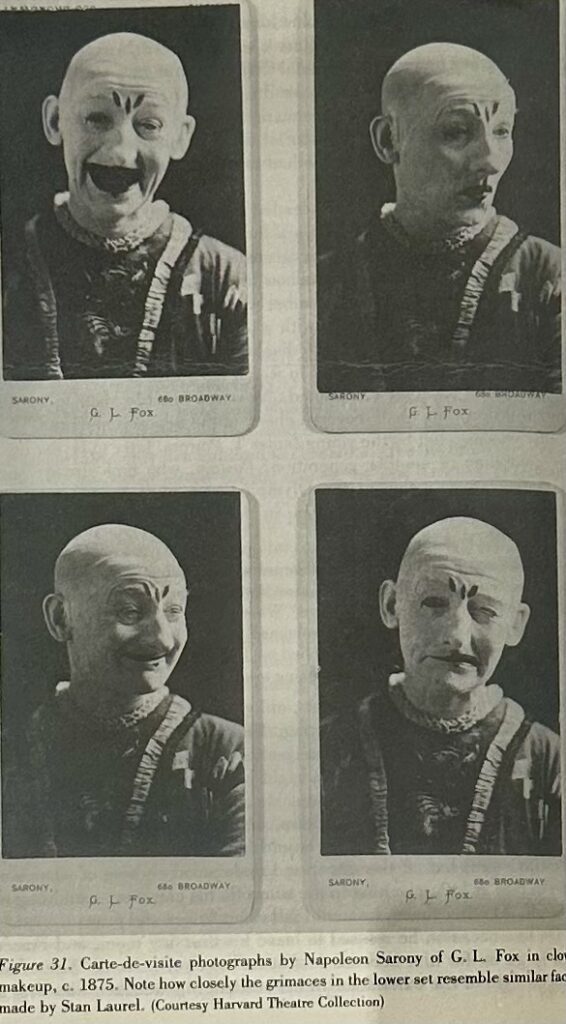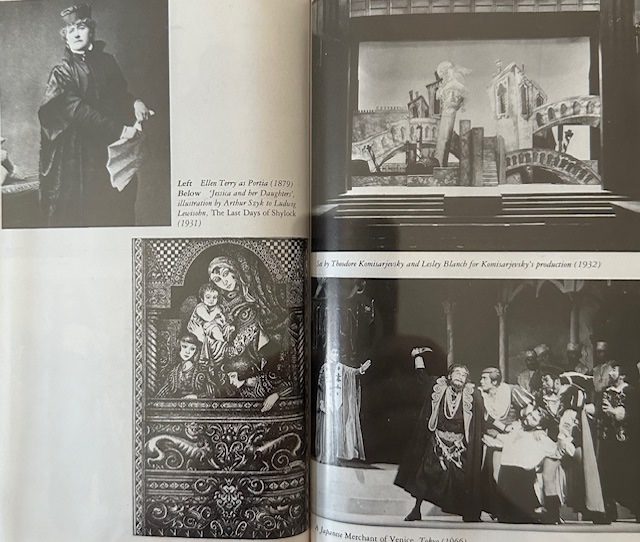Casual notes on show-biz books, memoirs and studies, dust gatherers and hot off the presses.
Book Review by Samuel L. Leiter . . . .
2nd edition:
The Age and Stage of George L. Fox 1825-1877 (Iowa City: University of Iowa Press, 1999; expanded ed.). 286pp.
Shylock: A Legend and Its Legacy (New York: Simon and Schuster, 1992). 386pp.
Today we look, briefly, at two books published toward the end of the last century, one in 1999 and the other in 1992, both dealing with an aspect of theater history. The first, The Age and Stage of George L. Fox 1825-1877, by the prolific theater historian Laurence Senelick, of Tufts University, is a thoroughly researched, well-documented, thoroughly indexed, and nicely illustrated academic biography of the eponymous actor, best known as the enormously popular clown character of Humpty Dumpty. He was featured in a series of extravagant 19th-century shows called pantomimes, an offshoot of the still-active British genre.

Unavoidably, a lot of the material describes, in detail, Fox’s career developments, which can get a bit tiresome in the “and then he did this, then he did that” mode; nevertheless, there’s a great deal of fascinating material to appreciate if you’re interested in the evolution of the 19th-century American stage. Much of it concerns the creation, development, and success of Uncle Tom’s Cabin, the most popular play of the day, Fox being related to that show’s originators. (Readers interested in the blood and thunder melodramas for which theaters on the Bowery were noted will also be well rewarded.)


Our other book, Shylock: A Legend and Its Legacy, published in Great Britain with the subtitle 400 Years in the Life of a Legend, is John Gross’s magisterial survey of the history of Shakespeare’s character Shylock, from The Merchant of Venice. Gross’s extremely readable account of the still highly controversial character and play covers an enormous amount of ground, treating not only Shylock’s presence in dramatic (and other) literature, but the handling of Jews in literature over the century. It is only passably well-illustrated, though, and, despite its extensive notes, lacks a bibliography.
The author explains the many conflicting interpretations of the character and play by critics, academics, and theater artists, while also discussing numerous stage productions, not only in the UK and America, but in European countries and elsewhere, including Japan. The numerous political, historical, sociological, literary, and psychological approaches to understanding and expressing Shylock are carefully commented on, as is the subject of antisemitism in literature.


The place of Shylock and The Merchant of Venice in pre- and post-Holocaust history is one of this enlightening book’s highlights. Gross writes for literate laymen, not academic specialists, although the latter have surely paid it much attention. I’m sorry it took me this long to read it.
Next up: Carole King, A Natural Woman: A Memoir


















